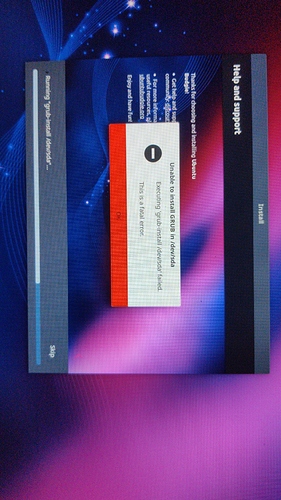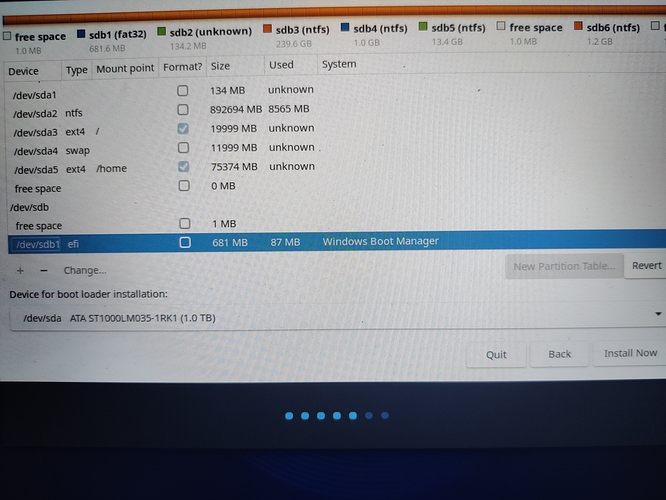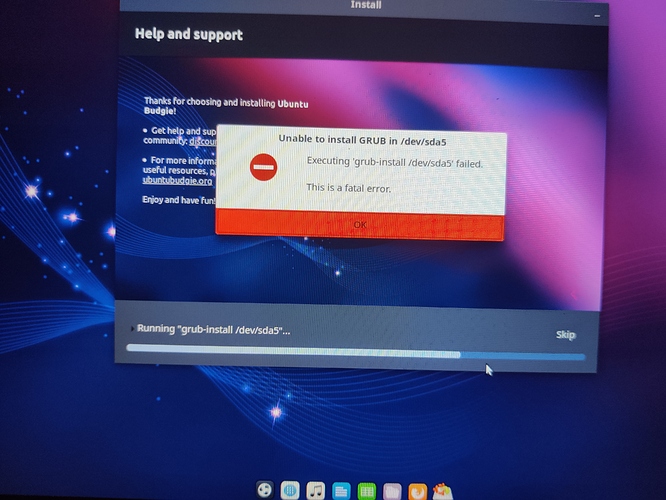I have a Dell laptop with two drives - I have the Windows 10 on SSD and I want to install Ubuntu on HDD. Windows has its own Boot Loader on an ESP in the SSD.
Can you please explain in detail how I should configure the partitions for the ubuntu boot loader in UEFI secure boot?
Are you talking about the ESP partition in particular or everything in regards to Linux booting, like GRUB, etc.?
Particularly regarding GRUB
Well, I think having 2 different drives with 2 different OSes is the best dual boot setup you can get, because you can barely get anything wrong. You just have to follow a single and simple rule:
Keep stuff for the first OS on the first medium and the stuff for the second OS on the second medium, only.
Therefore, knock yourself out with GRUB installation, etc. as long as you keep it on the drive where Linux is on. Don’t touch the Windows drive through Linux. Same goes for the other way around.
Okay got it. Thank you @Akito for the quick response and the clarification. It helps a lot
As Akito is saying, install grub in you linux drive. You will also have to run sudo update-grub and let grub find your W10 install. You also have to set the linux drive to boot first in your bios, if you do not then you will more than likely only boot into Windows.
I have set the device for boot loader to the drive that contains ubuntu
ie sda contains ubuntu
Could you post a gparted screenshot of your drives?
My device supports BIOS
Did you use msdos partition table or gpt on /dev/sda?
None at all, @4dandl4
Do I need to create a new partition for the boot loader like /boot or /boot/efi…please clarify
You can only have 4 partitions with msdos tables, you must have gpt tables. You also have W10 using UEFI, in order to get Ubuntu to boot using UEFI it must have a Fat 32 EFI partition, that may be the /dev/sda1 but it isn’t marked for formatting. Here is a link to something like what you are attempting https://askubuntu.com/questions/726972/dual-boot-windows-10-and-linux-ubuntu-on-separate-hard-drives. I do not use UEFI and I believe the tutorial you used was for running linux and windows side by side. Good Luck. Can you still boot Windows?
Tried the fix in the suggested article @4dandl4 and @Akito, still a problem comes up, please help
sda5 is an EFI partition of size 2GB.
any suggestions from linux experts is welcome - found your tutorials helpful.
@Akito, @4dandl4, @daniel.m.tripp, @A-NON-E-MUS, @winlinuser, @abhishek, @Fast.Edi and other Linux experts, please help me out as a beginner.
Thanks for everything in advance.
This is excellent advice. I just got a second hand mini PC with two SSD drives one as the original Windows 10 and I made a first install of Ubuntu 20.04 to try it out. I chose the drive to boot on from the BIOS for the moment but I may try to use Grub soon.
Hi @b9junkers, I also have a Dell. It is a Laptop Latitude E6440. I also have 2 disks. One HDD that has Windows 10 on it and one SDD with 4 Linux Distros on it.
- Please note: My solution was for only one disk connected at a time.
- Leaving my answer to help with discussion on MBR, GPT, and UEFI
The window 10 disk is a MBR formatted disk and uses Legacy support.
The Linux SSD disk is formatted as GPT and uses UEFI. On the Linux disk I have Ubuntu, Zorin, Mint Xfce, and Xubuntu installed. Doing some research I ran across this web page;
https://wiki.manjaro.org/index.php?title=Some_basics_of_MBR_v/s_GPT_and_BIOS_v/s_UEFI
In this page it said,-----> "Usually, MBR and BIOS (MBR + BIOS), and GPT and UEFI (GPT + UEFI) go hand in hand. This is compulsory for some systems (eg Windows), while optional for others (eg Linux). "
I’m sorry for all this detail, but wanted to give you some background information.
Here is a solution that worked for me, but might not be what you were looking for.
For my Linux SSD, I did the following;
- Formatted the SSD to GPT to make sure it was not in MBR format.
- Then I went into BIOS to switch rom to use UEFI instead of Latency. (3 different places)
- I used my Mint Cinnamon system to d/l the different ISO’s and to create the USB boot drive. Cinnamon has an option on the pull down (or right click) menu to create the USB drives w/o d/l’ing any other software.
- During the install of each Distro, I selected “Something Else” to place the “/” partition and to re-use (except 1st install) /home and swap.
You can see the different disk layouts at Three Distro SSD here on this forum.
The bad news.
When I want to boot the disk with Windows and MBR, I have to go back into BIOS and turn off UEFI.
When I want to boot Linux with UEFI, I again have to go into BIOS and turn UEFI back on.
Maybe good news.
I know there are some Linux Distro out there that support MBR type disks or maybe there is a way to force Ubuntu to install on a MBR disk. If you can get the Distro to install on a MBR format disk, then you would not have to change the BIOS setting back and forth. My BIOS has an option to support Legacy (MBR ?), but I could not get that to work.
Hi again, reading your problem in more detail, it seems you have 2 disks connected to the laptop at the same time. The solution I came up with was for booting from only one disk connected to the laptop. ![]()
So being a little ![]() and
and ![]() thinking about it more …
thinking about it more …
I would solve one problem at a time.
Disconnect your Win 10 disk and install Ubuntu as if it was the only system.
Once you can boot Linux by itself and you can boot Win 10 by it self …
then let’s work on dual boot.
*
I don’t think it is a requirement, but if Win 10 is on a MBR disk, I would put Linux on a MBR disk. IMHO
And always be sure to have backup of your data / system.
Looks like that is the only option I have now, @easyt50![]()
![]()
I will try it without my Windows SSD - thank you very much for the comprehensive post - cleared a few doubts I had about the process.
Have s nice day and stay safe!
Be sure and create an msdos partition table on your disk before OS install. This can be done by using gparted in your live media. Since this will be the only disk, you can let Ubuntu do the partitioning and formatting. You will also have to set your boot order in the bios, after reconnecting your Windows drive, for the linux drive. After rebooting to the linux drive you will have to run sudo update-grub to get Ubuntu to find your Windows drive. You will be using grub to chose your OS to boot, do not use EasyBCD, it is good for booting Windows, but not for booting Linux on a separate drive. Their is a simpler way of doing this, but this will work, and it is the only way I will run Linux with my W10.
I sure wish you would use your live media, and use Gparted that comes installed, to post a screenshot of your 2 drives, the screenshot you posted was from your install.
I need to clarify myself here, if Windows is using GPT and UEFI then the Ubuntu disk should also use GPT and UEFI, just make sure both disks are the same, either MBR or GPT.


